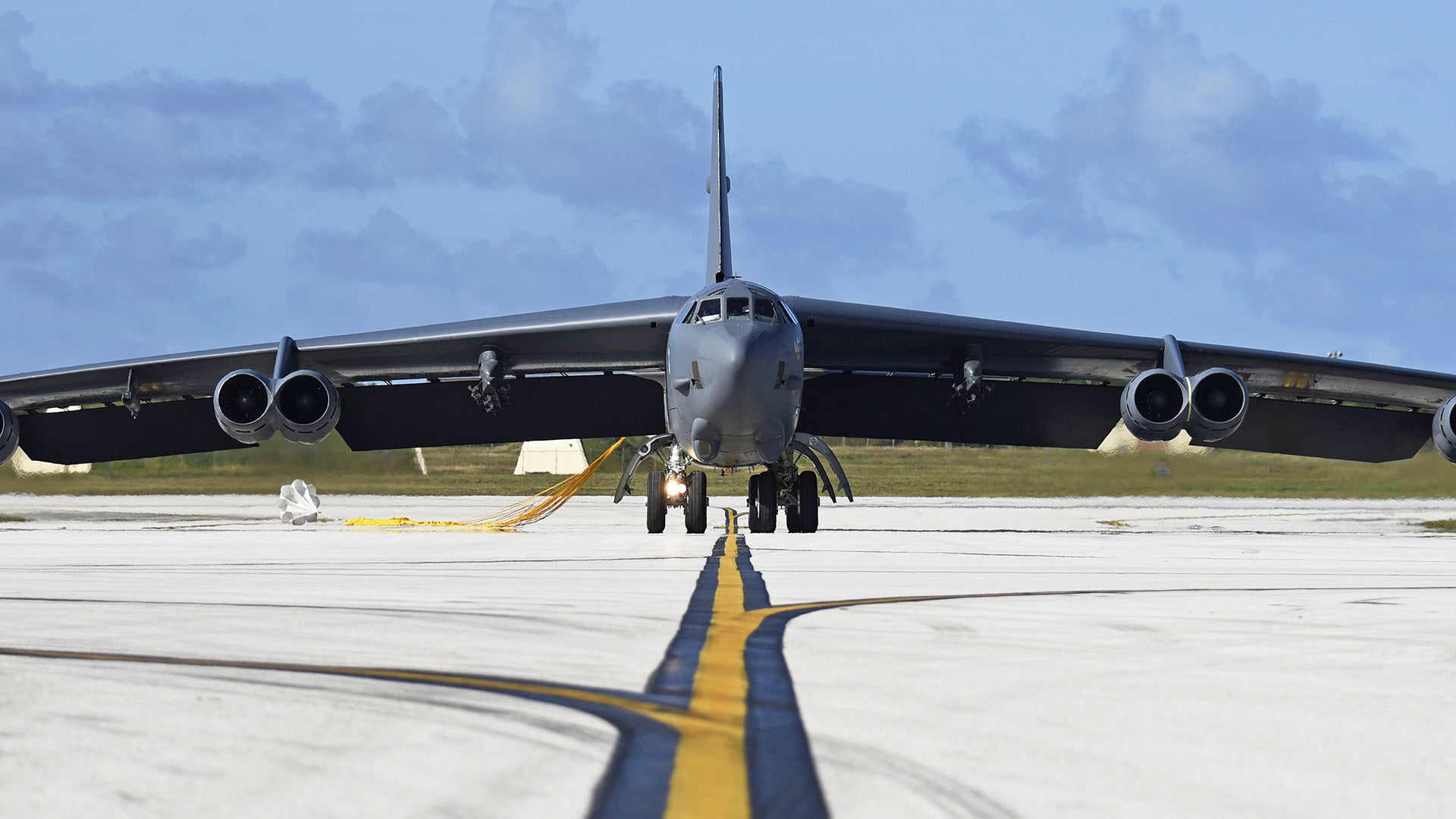The War Zone was the first to report yesterday that two B-52s were en route to Guam, and once there they would join examples of the USAF’s other two heavy bomber types that have also taken up station on the island. A cadre of B-1Bs have been forward deployed to Guam for nearly a year and a half as part of Pacific Command’s continuous bomber presence mission, while a trio of B-2A Spirit stealth bombers arrived on there just last week to fulfill the U.S. Strategic Command’s more flexible and temporary bomber assurance and deterrence mission. Now those B-52s have arrived at Andersen AFB and Pacific Command has stated that four more B-52Hs will soon join them. This is the first time all three bomber types have sat on the ground in Guam at the same time since a rare occurrence in August of 2016.
The six B-52s will be joined by a total of 300 airman from Barksdale AFB in Louisiana to support the half century old bombers while forward deployed to the Pacific for the foreseeable future. The B-52s are intended to relieve the B-1Bs that have taken on a starring role in the standoff with North Korea. The B-52s will begin to fulfill the continuous bomber presence mission towards the end of the month when their B-1Bs counterparts return to South Dakota. In the meantime, all three bomber types will likely fly training missions around the region, and they could even end up executing a big cooperative show of force near North Korean borders.

With the B-52 taking over the continuous bomber presence mission, the United States will have a persistently deployed nuclear capable combat aircraft in the Pacific theatre. Beyond its nuclear role, during the opening stages of an air war over North Korea the B-52 would be used to execute standoff cruise missiles strikes on North Korean targets, in particular on fixed air defense sites and non-fortified strategic targets. Those strategic targets could include facilities related to North Korea’s nuclear and missile programs, regime-related sites, and/or more traditional military installations. The “BUFFs” would also likely be used to launch throngs of air-launched decoys to support the very first strikes into North Korea by stealthy aircraft and cruise missiles. These Miniature Air-Launched Decoys (MALD) will work to confuse, jam, and stimulate the country’s air defense network, leaving it vulnerable to attack.
As the airspace over and near North Korea becomes less contested in the hours and days following the opening blows of a conflict, the B-52H could put its new smart rotary bomb rack and networking capabilities to use, dropping dozens of guided munitions of various sizes and capabilities on targets during single sortie. In particular the bombers could inflict heavy damage on North Korean emplacements along the DMZ.

For more analysis on how America’s surge of heavy bombers to the Pacific region could impact the geopolitical situation in North Korea, the Olympics and other factors, read this recent piece. But in the meantime we’ll likely see some amazing photos and video out of Guam of the three bomber types operating together.
We will keep you updated as to how the big bomber deployments to Guam continue to unfold.
Contact the author: Tyler@thedrive.com
